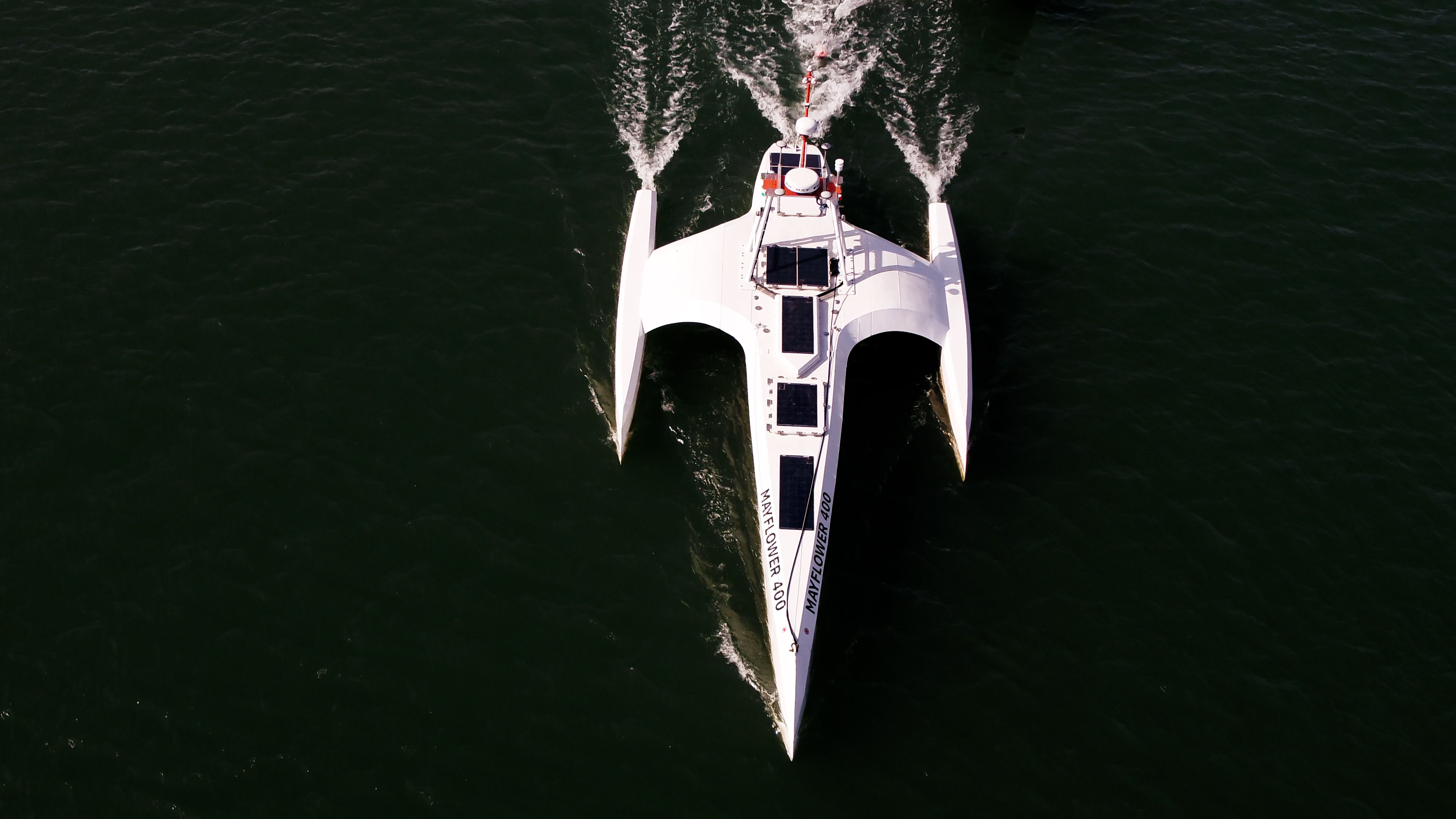The Mayflower Autonomous Ship (MAS) is set to re-embark on its three-week trans-Atlantic journey in April 2022 equipped with two Silicon Sensing’s AMU30 inertial measurement units (IMUs). These Silicon Sensing AMU30 devices send highly precise motion data to the new ‘AI captain’ that guides the vessel.
System specifications
AMU30 is the second of a new family of high performing MEMS IMUs (HPIMU) incorporating Silicon Sensing’s tried and tested precision VSG3QMAX high-Q inductive and VSG5 low-noise PZT resonating ring gyroscopes and capacitive accelerometers. AMU30 is a ten-degree-of-freedom inertial measurement unit with 3-axis magnetometer, pressure sensor and sophisticated AHRS algorithm, providing precise outputs of angular rate and acceleration, plus roll/pitch/heading angles, altitude/pressure and temperature, at 200Hz. It uses a unique multi-MEMS architecture to blend the inputs from dual independent MEMS sensing elements per axis to achieve benchmark all-MEMS inertial performance.
![]()
Measuring motion and orientation
The two AMU30 IMUs also assist in the MAS project, which aims to measure sea surface height as part of detailed scientific analysis of ocean topography. The project is led by marine research organization ProMare with IBM acting as both lead technology partner and lead scientific partner. Silicon Sensing and its joint venture parent company, Collins Aerospace, are sponsors with Silicon Sensing supplying its AMU30 high performance IMU.
While the AMU30 provides inertial data which is constructive in the computation of sea surface measurement, the AMU30 does not directly provide such data. However, knowing wave height and period (ocean topography) is useful in understanding ocean currents and is used, for example, in weather forecasting, climate and shoreline monitoring and conservation.
The AMU30 provides performance comparable with much larger and more expensive fiber optic gyroscopes (FOG). This means very high bias stability, accurate scale factor and low noise. The ability of inertial sensors to measure motion accurately is determined by these factors and AMU30 excels in this. The embedded AHRS (attitude and heading reference system) algorithm combines inertial data with magnetic sensing to provide an accurate heading measurement, allowing the MAS to determine the direction in which it is “pointing” relative to compass coordinates. The algorithm also provides a measure of roll and pitch allowing orientation to be determined in 3D space.
Assisting an AI Captain with real-time, precision movement measurements
The two AMU30 are used to make real-time, precision measurements of the movement of the Mayflower Autonomous Ship in 6 degrees of freedom (DOF) so that the AI Captain may make minute maneuvering adjustments to optimize vessel performance in a complex wavefield, while also providing redundant general navigation capability at sea. The AMU30 can run continuously and has an operational lifetime of 10’s of 1000s of hours; there is no human intervention required during operation of the AMU30 once it is set up and running.
Furthermore, when coupled with optical and RTK (real time kinematics) GPS information, the AMU30 assists the ship in making highly accurate measurements of sea surface height. Accurate measurements of ocean surface topography are important for studying ocean tides, circulation and the amount of heat the ocean holds.
The MAS journey across the Atlantic will celebrate the voyage of the original Mayflower some 400 years ago. It is just one element of an extensive scientific data gathering and research program the vessel will complete in the coming years. The ship is guided by its new AI Captain, built using IBM cloud, artificial intelligence (AI) and edge computing technologies, and uses a hybrid engine that draws on solar power. Working with scientists and other autonomous vessels it provides a flexible platform for deepening understanding of issues such as climate change, ocean plastic pollution and marine mammal conservation.
In parallel, the development of marine autonomous systems such as this will transform ocean-related industries such as shipping, oil & gas, telecommunications, security & defense, fishing & aquaculture.






